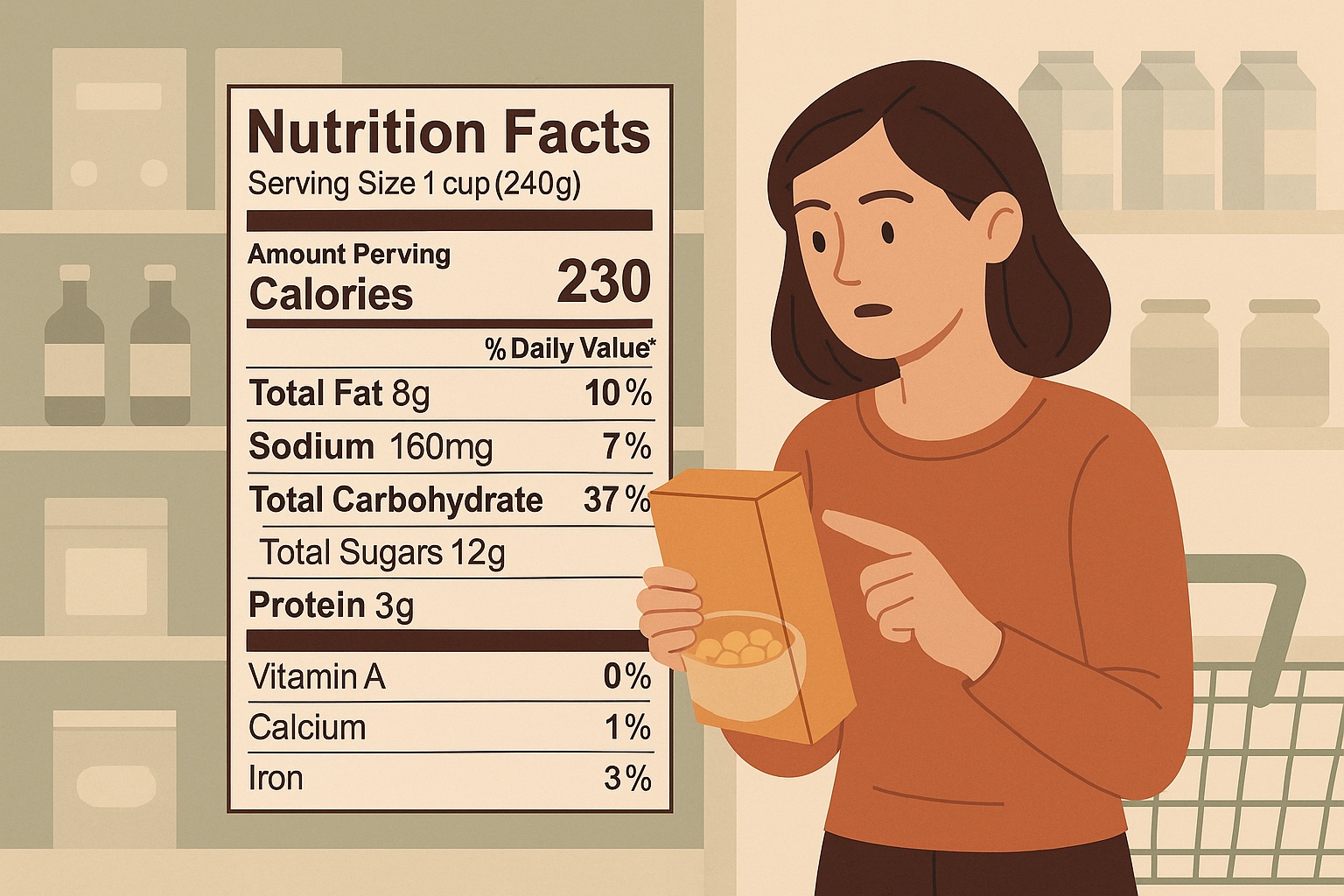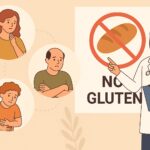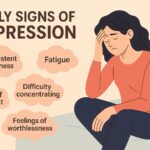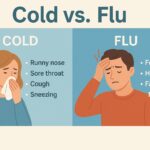How to Read a Nutrition Label Like a Pro in 2025
How to read a nutrition label is one of the most important skills for anyone trying to eat healthier, manage weight, or avoid hidden sugars and fats. In 2025, food manufacturers are required to follow updated FDA guidelines that make nutrition facts more transparent—but only if you know what to look for. This step-by-step guide will help you decode labels like a pro, so you can make smarter choices at the grocery store.
Why Nutrition Labels Matter
Every packaged food item in the U.S. is required to display a Nutrition Facts label. This label tells you what’s inside and how each serving contributes to your daily nutrient needs. Learning how to read a nutrition label empowers you to:
- Compare products and choose healthier options
- Identify hidden sugars, sodium, or unhealthy fats
- Track calories, macros, and essential vitamins
- Make informed choices for specific diets (e.g., low-carb, heart-healthy, gluten-free)
Start with the Serving Size
The first thing to check is the serving size and number of servings per container. This sets the stage for interpreting every other value on the label. Always compare this to how much you actually plan to eat.
- If a bag lists 2 servings but you eat the whole thing, you must double all the numbers.
- Beware of “snack-size” packages that seem small but contain multiple servings.
Calories: Energy in Every Bite
The calories line shows how much energy you get per serving. While counting calories isn’t always necessary, understanding them helps with weight maintenance or loss.
- 100–200 calories per serving is typical for snacks
- Over 400 calories per serving may require moderation depending on your daily intake
But not all calories are equal—so look deeper at where they come from.
Macronutrients: What They Tell You
Understanding the three macronutrients—fat, carbohydrates, and protein—is key when learning how to read a nutrition label.
- Total Fat: Includes all types of fat. Look for products with low saturated fat (under 5% DV) and zero trans fats.
- Cholesterol: Limit to under 300 mg per day to support heart health.
- Sodium: Too much sodium increases blood pressure. Aim for 5% or less per serving if you’re watching salt.
- Total Carbohydrates: Includes fiber, sugar, and starch. Not all carbs are bad—focus on:
- Dietary Fiber: Aim for 25–30g/day. More fiber = better digestion and blood sugar control.
- Added Sugars: Look for 5g or less per serving. Avoid products with sugar listed in the top three ingredients.
- Protein: Essential for muscle and immune health. 5–10g per serving is ideal for snacks and 15–30g for meals.
Understanding % Daily Value (%DV)
The % Daily Value helps you understand whether a food is high or low in a particular nutrient. It’s based on a 2,000-calorie diet, which may not apply to everyone, but it’s still a useful reference.
- 5% DV or less = low
- 20% DV or more = high
Try to limit saturated fat, added sugars, and sodium, while aiming to get more fiber, calcium, iron, potassium, and vitamins.
Ingredients List: The Truth Is at the Bottom
Underneath the nutrition panel, you’ll find the ingredients list. This section can reveal a lot about a product’s quality. Ingredients are listed by weight—those listed first are most prevalent.
- Avoid foods where sugar, corn syrup, or refined flour is in the top three ingredients.
- Fewer ingredients usually mean less processing and fewer additives.
- Watch out for artificial colors, preservatives, and unrecognizable chemical names.
Pro tip: If you can’t pronounce it, you might not want to eat it.
Nutrition Label Tricks to Watch Out For
Even with regulation, food companies use clever tactics. Be mindful of:
- Serving size manipulation — Making serving sizes unrealistically small to hide sugar or calories
- “Zero” claims — If under 0.5g, it can be labeled zero (e.g., trans fat)
- Multiple types of sugar — Listed under different names to avoid being seen in the top ingredients (e.g., dextrose, maltose, cane juice)
Special Diet Considerations
Learning how to read a nutrition label is crucial for those with specific health needs:
- Diabetics: Focus on total carbs and added sugars. Fiber helps slow glucose spikes.
- Heart patients: Limit sodium, saturated fat, and cholesterol.
- Weight loss: Pay attention to calorie density and fiber content to stay full longer.
- Allergy sufferers: Always check for allergen declarations like milk, eggs, soy, wheat, tree nuts, peanuts, fish, and shellfish.
FAQs About How to Read a Nutrition Label
- Is “low fat” always healthy?
No. Low-fat foods may have added sugar or sodium to boost flavor. - What’s the difference between “total sugars” and “added sugars”?
Total includes natural sugars (like in fruit), while added sugars are extra and should be limited. - Should I trust health claims on the front of the package?
Not always. Always turn the box around and read the actual Nutrition Facts panel.
Conclusion: Learn How to Read a Nutrition Label with Confidence
Understanding how to read a nutrition label gives you real power over your health. It helps you choose foods that support energy, wellness, and longevity—without falling for marketing gimmicks. With just a few minutes of label reading, you can build a smarter grocery cart and make every meal count.







